
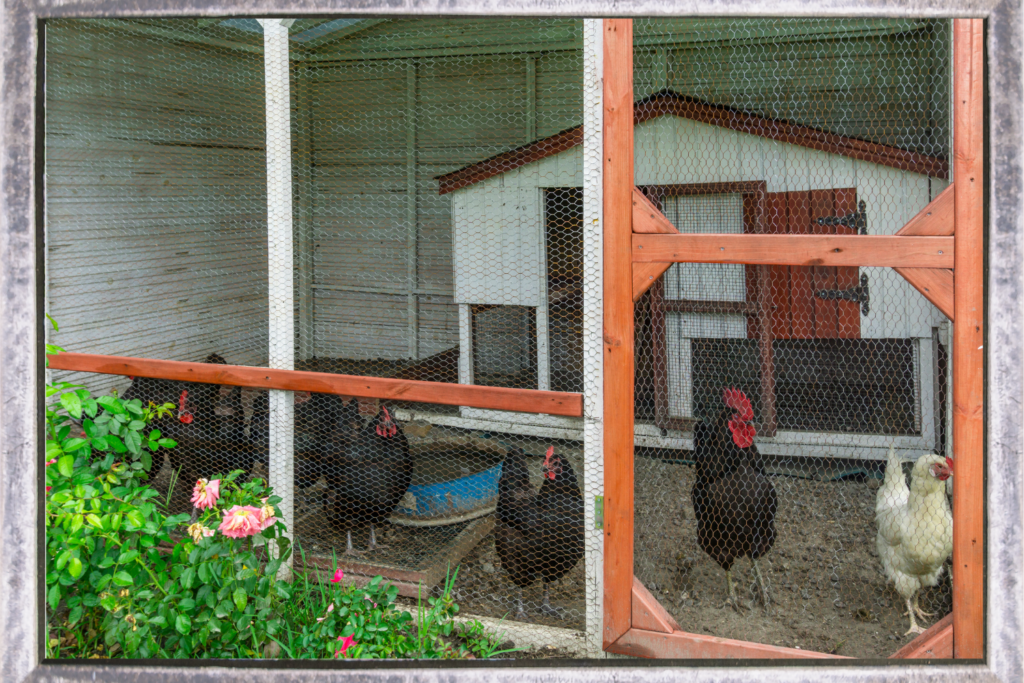
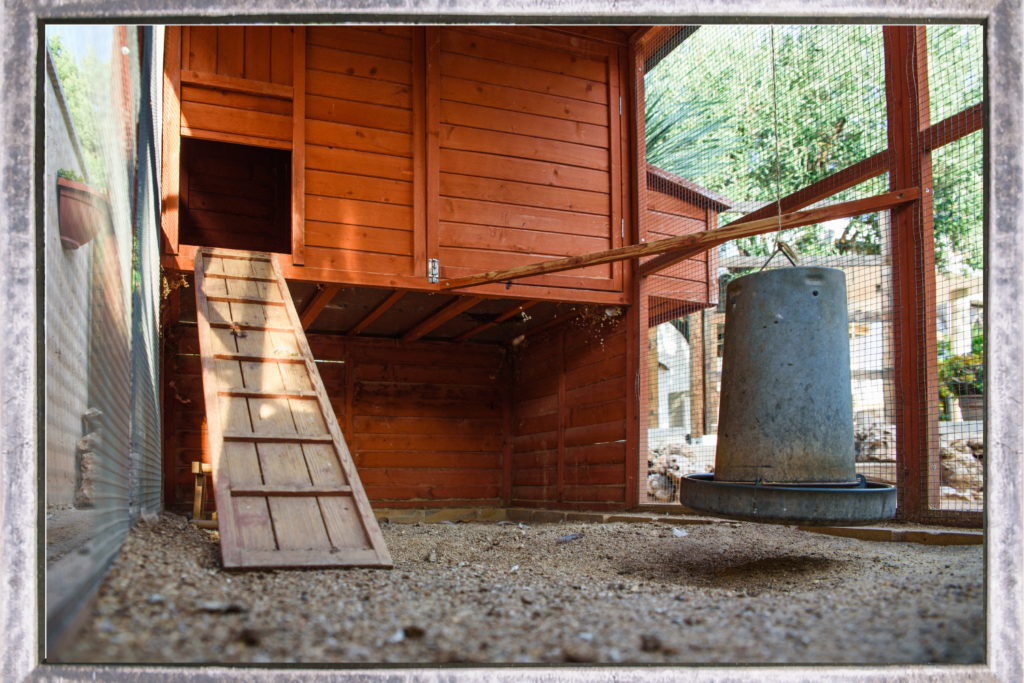
Chicken coops are the cornerstone of a successful backyard poultry operation, providing a safe and comfortable environment for your feathered friends. Whether you’re an experienced farmer or a novice urbanite venturing into the world of raising chickens, designing a coop demands careful planning and consideration. In this comprehensive guide, we’ll delve into the best practices for designing a chicken coop, offering valuable tips for urban settings and exploring the advantages of ready-made options.
This post may contain affiliate links. As an Amazon affiliate, we earn from qualifying purchases. But we only recommend products we would use ourselves. View our Disclosure Policy here.
Understanding Chicken Coop Design
Before diving into the specifics of chicken coop design, it’s essential to grasp the fundamental needs of your poultry. A well-designed coop should prioritize the following aspects:
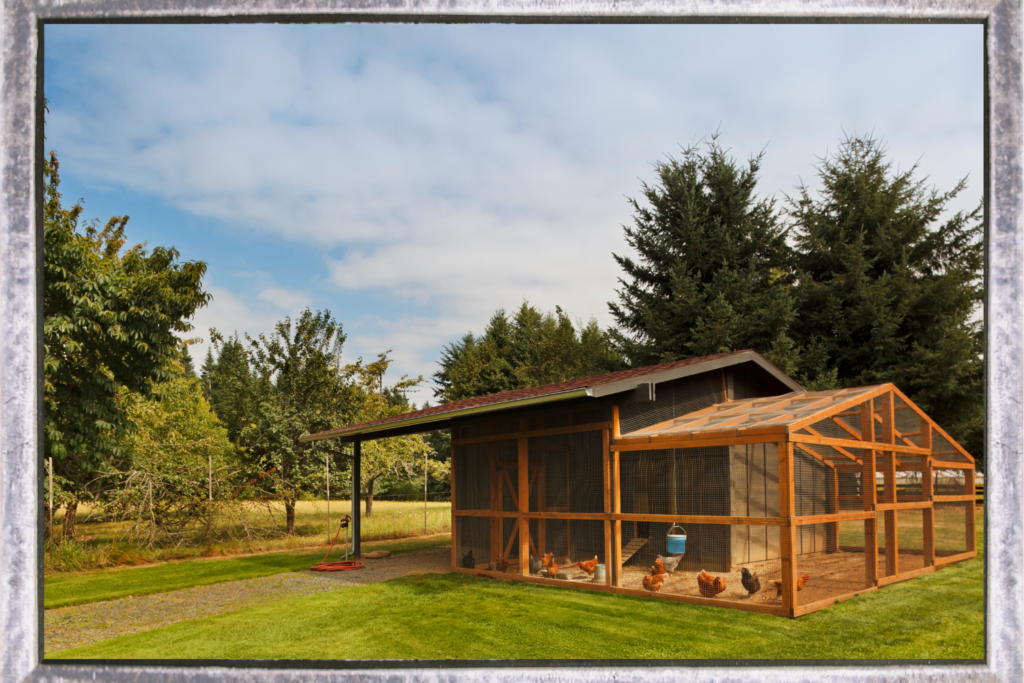
Space:
Chickens require adequate space to move around freely and engage in natural behaviors like scratching and dust bathing. The recommended space allocation varies based on factors such as the breed, coop size, and available outdoor run area. As a general guideline, aim for a minimum of 2-3 square feet per bird inside the coop and 8-10 square feet per bird in the outdoor run area. Providing ample space ensures that chickens can exercise, socialize, and avoid overcrowding, which can lead to stress and health issues.
Ventilation:
Proper ventilation is critical for maintaining optimal air quality and preventing moisture buildup inside the coop. Good ventilation helps regulate temperature, reduce humidity, and eliminate harmful gases like ammonia. When designing your coop, incorporate windows, vents, or adjustable openings to facilitate airflow while protecting against drafts and rain infiltration. Position vents near the roofline to encourage natural convection currents, allowing warm air to escape while drawing in fresh air from outside. Regularly monitor and clean ventilation openings to ensure they remain unobstructed and functional throughout the year.
Insulation:
Insulating the coop is essential for regulating temperature extremes and providing thermal comfort to your chickens. Insulation helps retain heat during colder months and keeps the coop cool in hot weather, creating a more stable and comfortable environment year-round. Common insulation materials include foam boards, fiberglass batts, or reflective barriers, which can be installed between the inner and outer walls of the coop. Consider factors such as climate, local temperature fluctuations, and chicken breeds’ cold tolerance when selecting insulation materials and thickness. Additionally, ensure proper ventilation to prevent moisture buildup and mold growth within insulated spaces.
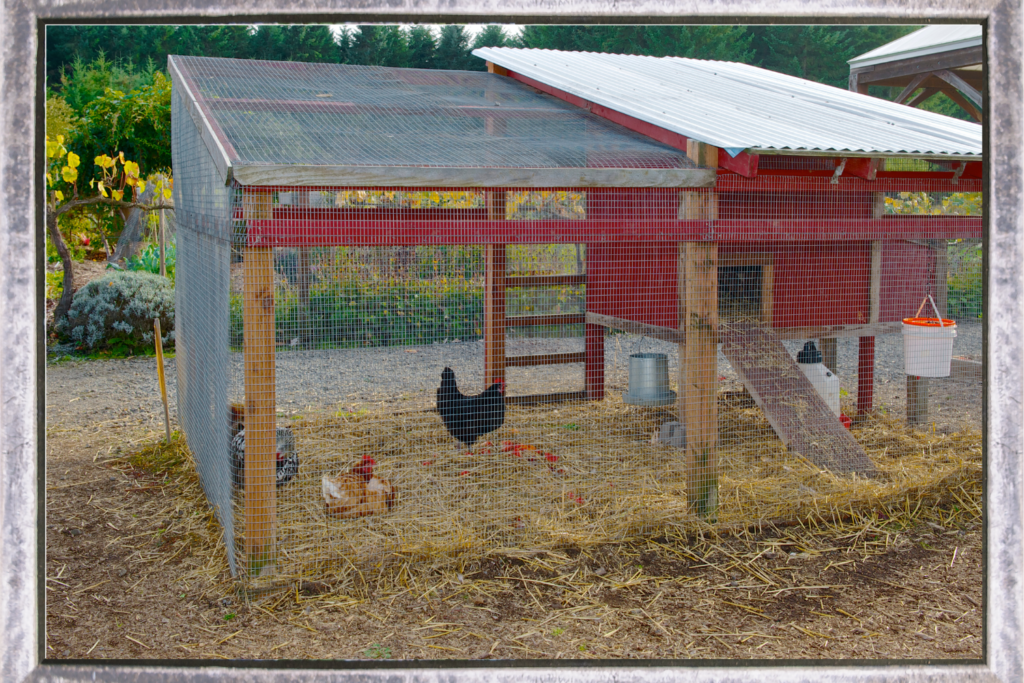
Protection:
Protecting your chickens from predators is paramount to their safety and well-being. Common predators include raccoons, foxes, snakes, and birds of prey, all of which pose a threat to chickens, especially at night. When designing your coop, use sturdy materials such as hardware cloth or welded wire mesh to enclose the structure and prevent unauthorized entry. Bury the wire mesh at least 12 inches below ground to deter digging predators like raccoons and foxes. Additionally, reinforce vulnerable areas such as doors, windows, and ventilation openings with predator-proof latches or locks to prevent forced entry. Regularly inspect the coop for signs of damage or wear and make necessary repairs promptly to maintain its integrity and security.
Accessibility:
Easy access for cleaning, maintenance, and egg collection is essential for efficient coop management. Design your coop with large doors or removable panels that allow convenient entry to all areas, including the interior, nesting boxes, and roosting areas. Consider incorporating features such as hinged roofs or drop-down panels for easy access to the coop’s interior, making routine tasks like cleaning bedding or refilling feeders less cumbersome. Install removable or sliding trays beneath roosts and nesting boxes to simplify waste removal and prevent soiling of the coop floor. Prioritize ergonomic design and user-friendly features to streamline daily chores and promote a positive coop management experience.
Roosting and Nesting Areas:
Providing comfortable roosting and nesting areas is essential for ensuring your chickens’ well-being and productivity. Roosts offer elevated perches where chickens can rest, sleep, and socialize, mimicking their natural behavior in the wild. When designing roosts, use sturdy materials such as wooden dowels or branches, ensuring they are positioned higher than nesting boxes to discourage chickens from roosting in the nesting area. Allow a minimum of 8-10 inches of roosting space per bird, with rounded edges to prevent foot injuries and adequate spacing between roosts to minimize overcrowding. Nesting boxes provide secluded and cozy spaces where hens can lay eggs comfortably, encouraging consistent egg production and minimizing stress-related issues. Aim for at least one nesting box per 3-4 hens, with dimensions of approximately 12-14 inches square and 12-14 inches deep, lined with clean bedding material such as straw or wood shavings. Position nesting boxes in a quiet and dimly lit area of the coop, away from high-traffic zones and roosting areas, to provide privacy and encourage nesting behavior.
Tips for Building a Chicken Coop in the City
Designing a chicken coop in urban environments presents unique challenges and considerations. Follow these tips to create a coop that harmoniously fits into city living:
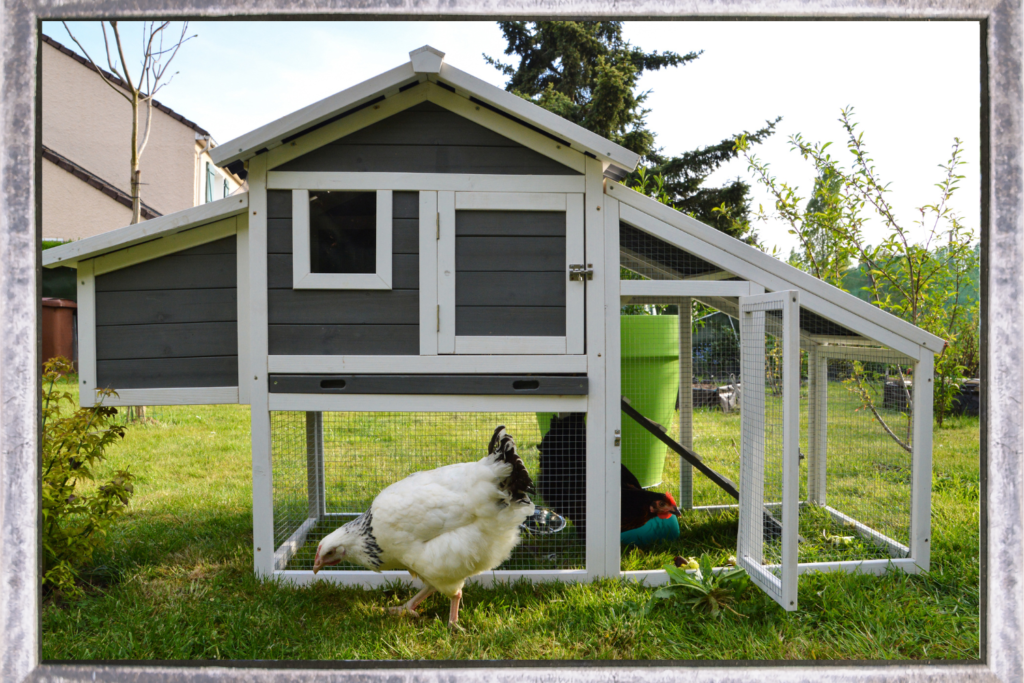
Check Local Regulations:
Before embarking on your coop-building journey, familiarize yourself with local zoning laws, homeowner association rules, and any permits required for keeping chickens in your area. Many cities have specific ordinances governing the size, location, and appearance of chicken coops, as well as restrictions on the number of chickens allowed per property. Contact your local municipality or planning department to obtain the necessary permits and ensure compliance with relevant regulations before starting construction.
Optimize Space:
Urban lots often have limited space, requiring creative solutions to maximize efficiency and functionality. When designing your coop, consider vertical space and compact layouts that make the most of available square footage. Utilize multi-level designs, stackable modules, or integrated features such as rooftop gardens or green roofs to maximize space utilization while providing additional benefits such as insulation, stormwater management, and aesthetic appeal. Integrate the coop with existing structures like sheds, garages, or fences to minimize its footprint and blend seamlessly into the urban landscape.
Noise and Odor Control:
Address concerns about noise and odor by selecting chicken breeds known for their quiet demeanor and implementing effective waste management strategies. Choose breeds renowned for their docile nature and minimal vocalization, such as Buff Orpingtons, Australorps, or Silkies, which are well-suited to urban environments and unlikely to disturb neighbors with excessive noise. Implement proper waste management practices, such as regular cleaning, composting, and odor-neutralizing additives, to minimize odor emissions and maintain a clean and sanitary coop environment. Use absorbent bedding materials like straw, wood shavings, or hemp fibers to absorb moisture and reduce ammonia levels, improving air quality and odor control within the coop.
Aesthetics:
Blend your coop seamlessly into the urban landscape by selecting materials, colors, and designs that complement the surrounding architecture and environment. Choose durable yet visually appealing materials such as cedar, redwood, or composite lumber that offer both functionality and aesthetic appeal. Incorporate decorative elements such as trim, moldings, or architectural details that mimic the style of nearby buildings or structures, creating a cohesive and visually pleasing aesthetic. Use paint or stain to enhance the coop’s appearance and protect against weathering, selecting colors that harmonize with the surrounding landscape and reflect your personal style preferences. Integrate greenery, trellises, or living walls to soften the coop’s facade and promote biodiversity, creating a welcoming and attractive addition to your urban backyard.
Neighbor Relations:
Maintain positive relationships with neighbors by communicating openly about your plans to keep chickens and addressing any concerns they may have regarding noise, odor, or property aesthetics. Educate neighbors about the benefits of backyard chickens, such as fresh eggs, natural pest control, and sustainable food production, highlighting how responsible coop management can minimize potential nuisances and promote community well-being. Be proactive in addressing any complaints or issues raised by neighbors, such as noise disturbances or odor emissions, by implementing mitigation measures and seeking constructive solutions. Consider inviting neighbors to visit your coop, meet your chickens, and learn more about urban poultry keeping firsthand, fostering a sense of community and cooperation among residents.

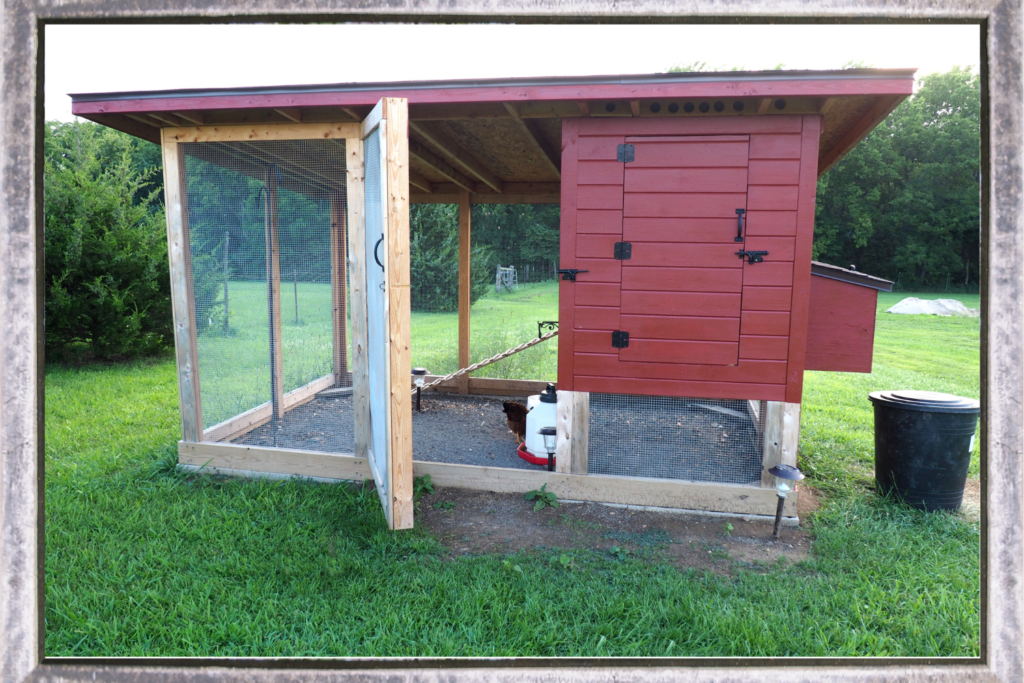
Benefits of Purchasing a Ready-Made Chicken Coop
While building a custom chicken coop can be a rewarding DIY project, there are several compelling reasons to consider purchasing a ready-made coop:
Time-Saving:
Ready-made coops are pre-designed and often come with detailed assembly instructions, saving you time and effort compared to building from scratch. With ready-made coops, you can skip the lengthy planning and construction process and have a fully functional coop ready for occupancy in a fraction of the time.
Quality Assurance:
Established coop manufacturers use durable materials and proven designs to ensure the structural integrity and longevity of their products. By purchasing a ready-made coop, you can rest assured that your chickens are housed in a safe and reliable environment built to industry standards. Coops from reputable manufacturers undergo rigorous quality control measures to meet or exceed safety, durability, and performance requirements, providing peace of mind for chicken keepers.
Convenience:
Ready-made coops are delivered to your doorstep, eliminating the need to source materials, measure, and cut lumber, or navigate the intricacies of construction. Simply follow the provided assembly instructions, and your coop is ready for occupancy in a matter of hours. Ready-made coops come with all the necessary components, hardware, and accessories, minimizing the hassle of coordinating multiple suppliers or making trips to the hardware store.
Portability:
Some ready-made coops are designed with portability in mind, featuring wheels, handles, or lightweight construction that allows easy relocation within your property or during moves to new locations. Portable coops offer flexibility and convenience, allowing you to adjust the coop’s position to optimize sunlight exposure, access fresh forage, or rotate grazing areas for your chickens. Whether you’re renting a property, renovating your backyard, or planning to move in the future, a portable coop provides a versatile and adaptable housing solution for your feathered friends.
Customization Options:
Many manufacturers offer customization options to tailor the coop to your specific needs and preferences, allowing you to personalize features such as size, layout, materials, and accessories. Whether you require extra nesting boxes, additional ventilation, predator-proofing upgrades, or aesthetic enhancements, customizing your coop ensures it meets your unique requirements and reflects your individual style. Work with the manufacturer to explore customization options, request modifications, or incorporate special features that enhance functionality, durability, and usability while accommodating your budget and timeline constraints.
Designing a chicken coop requires careful attention to detail and consideration of various factors, from space and ventilation to security and aesthetics. In urban settings, additional challenges such as space constraints and neighbor relations must be navigated to create a coop that seamlessly integrates into the city landscape. While building a custom coop can be a fulfilling endeavor, ready-made options offer convenience, quality assurance, and customization possibilities that appeal to both novice and experienced chicken keepers alike. By prioritizing the welfare of your feathered friends and embracing innovative design solutions, you can create a chicken coop that not only meets their needs but also enhances your urban living experience. With proper planning, thoughtful design, and responsible management, your chicken coop can be a source of joy, productivity, and sustainability for years to come.
Other articles you may find interesting. We hope you enjoy our tips, tricks, and ideas.
